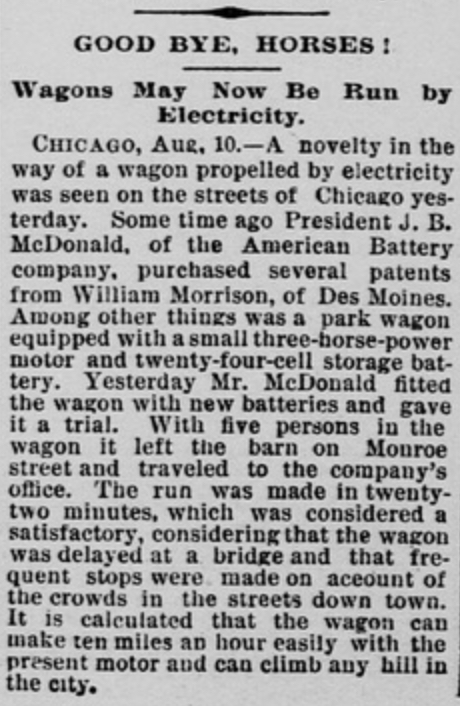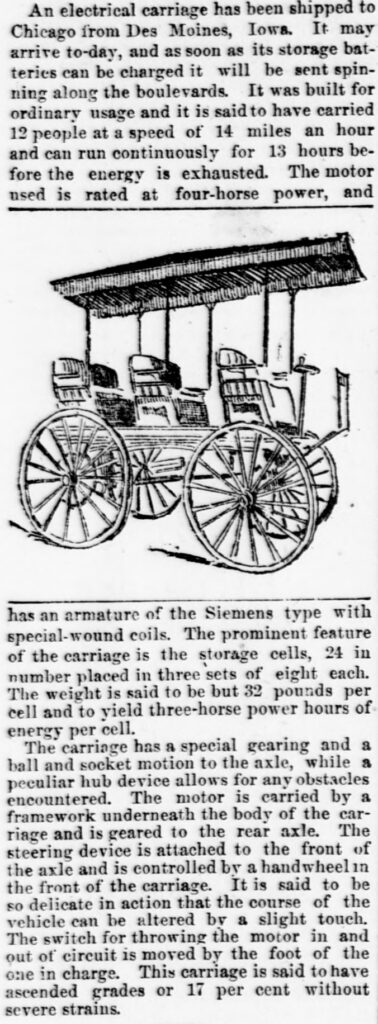Electric Vehicles
-
Introduction - Electric Vehicles
-
Objectives - Electric Vehicles
-
Electric Vehicle Timeline4 Topics
-
How Electric Vehicles Work4 Topics
-
Electric Vehicle Components4 Topics
-
High Voltage Safety5 Topics
-
Electric Vehicle Emergencies8 Topics
-
Charging an Electric Vehicle7 Topics
-
Buying an Electric Vehicle4 Topics
-
Driving an Electric Vehicle4 Topics
-
Maintaining an Electric Vehicle
-
Electric Vehicle Conversion Kits
-
Automotive Manufacturers23 Topics
-
BMW Group
-
Canoo
-
Daimler Group
-
Fisker
-
Ford Motor Company
-
Geely Auto
-
General Motors
-
Honda Motor Company
-
Hyundai Motor Group
-
Lordstown Motors
-
Lucid Motors
-
Mazda Motor Corporation
-
NIO
-
Renault Nissan Mitsubishi Alliance
-
Rivian
-
Stellantis
-
Subaru Corporation
-
Tata Motors
-
Tesla
-
Toyota Motor Corporation
-
Volkswagen Group
-
Volvo
-
XPeng
-
BMW Group
-
Summary - Electric Vehicles
-
Activities - Electric Vehicles1 Topic
-
Review - Electric Vehicles
-
Test - Electric Vehicles1 Test
Electric Vehicle Timeline
The history of the EV dates back to the 1800s. Experiments with electricity to power mechanical devices accelerated during this time. In 1890, William Morrison demonstrated the first practical electric automobile in Des Moines, Iowa. Basically, an electric horseless carriage, Morrison’s electric vehicle could carry up to twelve passengers on three bench seats. The race between EVs and internal combustion engine (ICE) vehicles began. In 1900 about 1 in 3 cars in the United States was electric. EVs were promoted as quiet, easy to drive, and that they didn’t emit smelly pollutants. Before the electric self-starter (invented by Charles Kettering) was introduced in Cadillac vehicles in 1912, a driver would use a hand crank to start an ICE vehicle. The hand crank could kick back and injure or kill the person cranking the engine. This was the same year that about 30,000 electric cars were sold in the United States. The electric self starter made ICE vehicles much easier to start for all drivers. Studebaker announced in 1912 – “The production of electric automobiles at South Bend has ended. . . It has been conducted for nine years without much success, and ultimately the superiority of the gasoline car (is) apparent.” Henry Ford’s Model T moving assembly line in 1914 significantly moved automotive production to focus on ICE vehicles.


1827
Anyos Jedik develops electromagnetic self rotor (stator, rotor, and commutator)
1832
William Sturgeon develops commutator DC electric motor
1832
Robert Anderson develops rudimentary electric carriage
1837
Thomas Davenport patented commutator-type DC electric motor
1890
William Morrison demonstrates his Electric Automobile in Des Moines, Iowa (first practical electric automobile)
1899
Baker Motor Vehicle Company (Baker Electrics) formed featuring Electric Vehicles
1899
Columbia (Motor Car Company) formed featuring Electric Vehicles
1900
About 1 out of 3 cars are Electric in the United States
1900
The first Lohner-Porsche Electromobile with an electric wheel hub motor was presented at the Expo in Paris
1902
Studebaker, previously a builder of horse drawn carriages/wagons, starts to produce Electric Vehicles
1906
Baker Motor Vehicle Company produces 800 Electric Cars
1907
Detroit Electric Car produced by the Anderson Electric Car Company
1912
30,000 Electric Cars were sold in the United States
1964
GM developed the Electrovair concept car
1971
NASA Lunar Roving Vehicle runs on electricity
1974
Sebring-Vanguard manufactures the CitiCar
1996
California Air Resources Board (CARB) signed a Memoranda of Agreement (MOA) with auto manufacturers making them produce demonstration fleets of Zero Emission Vehicles (ZEVs)
1996
General Motors EV1 produced
2003
Tesla Motors formed
2008
Tesla Roadster produced
2009
Mitsubishi i-MiEV produced
2010
Nissan LEAF produced
2017
Tesla Model 3 produced
2020
500,000th Nissan LEAF produced
2020
Tesla Model 3 surpasses Nissan Leaf to become the world’s best-selling electric car in history
2021
Virtually every automotive manufacturer is producing or has plans to mass-produce electric vehicles

